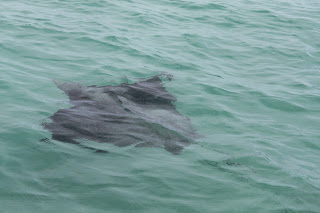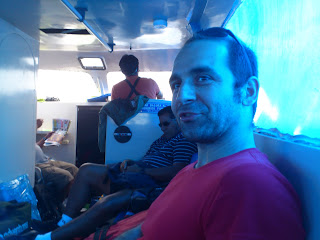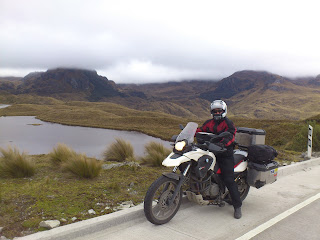To keep the prisoners busy they built in the middle of the Island a huge wall made of stones.
Today the people have gone but the meaningless wall is still there.
My question is: did the americans really had to go all the way to the Galapagos to do that. They could have built a wall to keep their prisoners busy, I don't know, in Montana....
After visiting the "wall of tears" we spent another 3 hrs on a speed boat from Isla Isabela to Santa Cruz.
This last journey was tainted by the fact that half way through the journey the boat landed at full speed on top of a Giant Manta, probably killing it.
The impact was so hard that even the engines of the boat turned off.
We could only stare powerless at the movements of the manta's wings,flapping frantically in the middle of the ocean before our boat took off again.
After having learnt for days of Men's responsibilty for the extintion of various species in the islands, this event made us all feel really bad.
I don't know if this was an accident or a mistake due to careless handling of the boat.
What we know is that one of the reasons we originally opted to use "Tropic" (the agency) was the fact that they claim to promote "responsible eco tourism", and unfortunately I can now say they don't.
Once in Santa Cruz we went to see the Darwin Centre.
Darwin spent some time at the Galapagos while developing his theory on evolution.
The Darwin centre however is not dedicated to evolution: it is devoted to conservation.
The Darwin Centre it is also the home for Lonesome George.
As th picture says George is the last one of his dynasty.
He is currently 93 and inspite of all the efforts is destined to extintion.
The extintion of the Pinta Tortuoise was once again due to human intervention.
This time however, not by over hunting (as it happened on the Floriana island) but for the introduction of goats on Pinta island.
Goats became soon competitors for food on the island which led to the extintion of the tortuoise.
We learnt a lot about conservation and evolution and yet, not even the experts at the Darwin Centre could explain this.........




























































